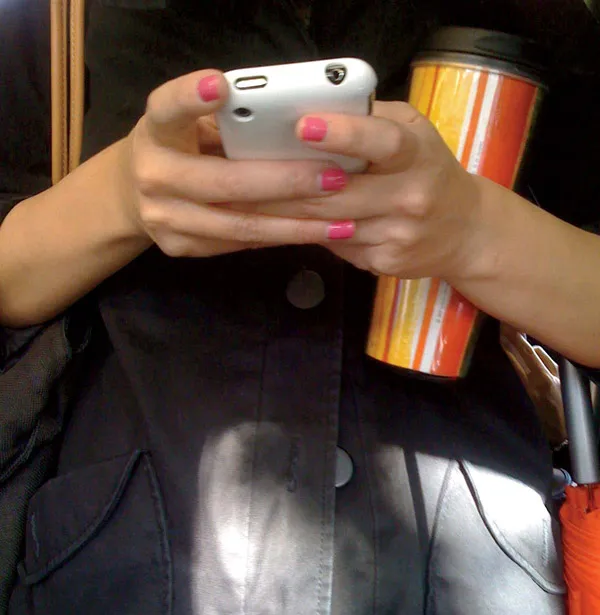
eBook - ePub
The User Experience Team of One
A Research and Design Survival Guide
Leah Buley
This is a test
Buch teilen
- 246 Seiten
- English
- ePUB (handyfreundlich)
- Über iOS und Android verfügbar
eBook - ePub
The User Experience Team of One
A Research and Design Survival Guide
Leah Buley
Angaben zum Buch
Buchvorschau
Inhaltsverzeichnis
Quellenangaben
Über dieses Buch
The User Experience Team of One prescribes a range of approaches that have big impact and take less time and fewer resources than the standard lineup of UX deliverables. Whether you want to cross over into user experience or you're a seasoned practitioner trying to drag your organization forward, this book gives you tools and insight for doing more with less.
Häufig gestellte Fragen
Wie kann ich mein Abo kündigen?
Gehe einfach zum Kontobereich in den Einstellungen und klicke auf „Abo kündigen“ – ganz einfach. Nachdem du gekündigt hast, bleibt deine Mitgliedschaft für den verbleibenden Abozeitraum, den du bereits bezahlt hast, aktiv. Mehr Informationen hier.
(Wie) Kann ich Bücher herunterladen?
Derzeit stehen all unsere auf Mobilgeräte reagierenden ePub-Bücher zum Download über die App zur Verfügung. Die meisten unserer PDFs stehen ebenfalls zum Download bereit; wir arbeiten daran, auch die übrigen PDFs zum Download anzubieten, bei denen dies aktuell noch nicht möglich ist. Weitere Informationen hier.
Welcher Unterschied besteht bei den Preisen zwischen den Aboplänen?
Mit beiden Aboplänen erhältst du vollen Zugang zur Bibliothek und allen Funktionen von Perlego. Die einzigen Unterschiede bestehen im Preis und dem Abozeitraum: Mit dem Jahresabo sparst du auf 12 Monate gerechnet im Vergleich zum Monatsabo rund 30 %.
Was ist Perlego?
Wir sind ein Online-Abodienst für Lehrbücher, bei dem du für weniger als den Preis eines einzelnen Buches pro Monat Zugang zu einer ganzen Online-Bibliothek erhältst. Mit über 1 Million Büchern zu über 1.000 verschiedenen Themen haben wir bestimmt alles, was du brauchst! Weitere Informationen hier.
Unterstützt Perlego Text-zu-Sprache?
Achte auf das Symbol zum Vorlesen in deinem nächsten Buch, um zu sehen, ob du es dir auch anhören kannst. Bei diesem Tool wird dir Text laut vorgelesen, wobei der Text beim Vorlesen auch grafisch hervorgehoben wird. Du kannst das Vorlesen jederzeit anhalten, beschleunigen und verlangsamen. Weitere Informationen hier.
Ist The User Experience Team of One als Online-PDF/ePub verfügbar?
Ja, du hast Zugang zu The User Experience Team of One von Leah Buley im PDF- und/oder ePub-Format sowie zu anderen beliebten Büchern aus Business & Marketing Research. Aus unserem Katalog stehen dir über 1 Million Bücher zur Verfügung.
Information
PART I

Philosophy
What makes a team of one special is that you find yourself in situations where you not only see an opportunity for a more user-centered approach, but you also need to lead the charge, bringing others along with you. A team of one challenges the mighty forces of the status quo, inertia, and other people’s way of doing things. That’s brave and ambitious work, and it requires not only technical know-how but also vision, conviction, and a soft touch. This part of the book will arm you with all of the above. The approach outlined here can help you spread the growth of a new and exciting field, one person at a time.

PHOTO BY ANGELO AMBOLDI (FLICKR)
CHAPTER 1

UX 101
Defining User Experience
An Example
Where UX Comes From
Where UX Professionals Come From
If You Only Do One Thing...
Talking about user experience (UX) can be a bit like looking at an inkblot test: whatever matters the most to you ends up being what you see. People find their way to the field of user experience through a variety of pathways, and they naturally apply their own lenses in how they think about and describe the work of UX. This chapter will attempt to balance out the picture by giving you a simple definition of user experience to work with, a little more information about where it comes from, and an understanding of how it’s different from other fields.
Defining User Experience
User experience is a famously messy thing to describe. Many people have offered their own definition, and yet no single one has prevailed as the clear favorite. UX, it turns out, is a controversial concept. This is probably because “user experience” is a general term that describes not only a professional practice, but also a resulting outcome. To be a user experience designer means to practice a set of methods and techniques for researching what users want and need, and to design products and services for them. Through good UX, you are trying to reduce the friction between the task someone wants to accomplish and the tool that they are using to complete that task. The resulting user experience that someone has is determined by a multitude of factors so vast that no one person, team, or even technology can claim to be responsible for it (see Figure 1.1).

FIGURE 1.1
Often, the term user experience refers to the encounters that people have with digital products, like software or a Web app.
Often, the term user experience refers to the encounters that people have with digital products, like software or a Web app.
In a simple working definition, you might say that a user experience is the overall effect created by the interactions and perceptions that someone has when using a product or service (see Figure 1.2). User experience is a fancy term for what people often describe with words like “love” or “hate”; or phrases such as, it’s “easy to use,” or “a pain in the butt.” You may recognize user friendly as a term that has worked its way into popular usage. For example, when someone says a product is user friendly, he is basically referring to the user experience. Given that we transact so much of our lives through technology, how easy or difficult it is to use is what really matters. And that’s what user experience is all about.

FIGURE 1.2
User experience is not just restricted to what you do on your phone or your laptop. This shopping mall directory has an interactive user experience, which impacts how easily shoppers can find what they are looking for in their physical environment.
User experience is not just restricted to what you do on your phone or your laptop. This shopping mall directory has an interactive user experience, which impacts how easily shoppers can find what they are looking for in their physical environment.
As a field of professional practice, user experience encompasses several disciplines. The main contributors are user research and user experience design. User research is about understanding users and their needs, and user experience design is about designing a user’s interactions with a product from moment to moment. Lots of user experience professionals have one of those titles, but it’s also common to see people mixing and matching these terms into inventive but nonstandard titles like “user experience architect” or “user interaction designer.”
But there are other disciplines that certainly contribute to the resulting experience that a user has with a product, even if they may not fit as snugly into the job description of a user experience designer. These disciplines include visual design, content strategy, copywriting, business analysis, product management, project management, analytics, search engine marketing and optimization, brand marketing, and even engineering. In this field, there are lots of heated discussions about who gets to claim ownership of the user experience. Without fueling the flames, let’s just say that for the purposes of this book, if you do any of these things, you’re contributing to the user experience of your product, and this book is for you.
An Example
Personally, I think it’s easier to understand UX when you think about what it’s like to actually use a product. For example, right now I’m sitting in front of my computer, hopping around within the operating system and keying from my word processing program to my email program to my music program. My perception of each of those programs is impacted by how it looks, how it functions, and how well it serves its purpose in the personal need that it satisfies. (Helping me write a book; managing my personal and professional communications; and listening to some tunes that keep me tapping my feet as I work, respectively). In any of these programs, a thousand little decisions were made by someone—or more probably, many “someones”—to create what I experience as the flowing, seamless experience of working (see Figure 1.3).
And that’s just the software. My user experience is also impacted b...